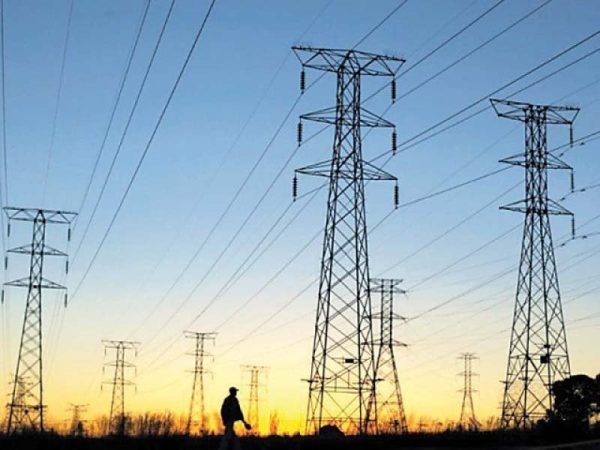Towards environmentally cleaner alternative fuels

20 November 2023
Publsihed in: The Express Tribune
ISLAMABAD: Petrol, diesel, gas and liquefied petroleum gas (LPG) are widely known and used fuels. But there are other alternative fuels as well which can be used independently or can be mixed with the aforementioned fuels in various proportions.
Motivations for the alternative fuels can vary depending on individual circumstances. These are environmentally cleaner, local resource endowment, lower cost and foreign exchange savings. We will discuss here the already developed fuels like bio-ethanol and methanol. We may in passing discuss biogas as well, as its resource base is there but is not being used as widely as it could have been.
Bio-ethanol
The main alternative fuels are ethanol (bio-ethanol) and methanol. Pakistan State Oil (PSO) had introduced E5 (5% mixture of ethanol and 95% gasoline) more than a decade ago. For unknown reasons or market scepticism, the E5 grade has been dropped.
However, amazingly, the Oil and Gas Regulatory Authority (Ogra) continues to issue tariff for this product probably leaving options for those oil marketing companies (OMCs) which may have some new thoughts about it and may like to enter into this segment. Ethanol is being locally produced by the sugar industry and is exported. Competition with export possibilities may be another constraint. Economics of exports vs equivalent amount of petrol should be re-examined.
Technically, there should be no scepticism as E5 and even E10 are being widely used in most countries including the US, EU, Asean and other regions. Even higher percentages of ethanol are being envisaged. India is already doing it in case of E5 and E10. It had a goal of introducing even E20 by 2030. However, recently, India has advanced its target to 2025.
The motivation is cleaner fuel environment has become a major issue in South Asia, as we are seeing the smog issue on both sides of the border.
The second motivation is resource base. Bio-ethanol can now be produced out of crop waste and even MSW (municipal solid waste).
On both sides of the border, crop waste like rice stubble is being burnt and contributing to smog and pollution. There are other crop wastes also. Similarly, there is a lot of MSW burning in both countries.
Under the new circumstances when environmental issues have become so serious, E5 and E10 issue should be taken up afresh and appropriate programme and policy be introduced.
Methanol
Now coming to methanol (CH3OH), which is a versatile chemical. It is used both as a starting chemical for producing many chemicals and petrochemicals. It is used as energy compound as well. It is mixed with gasoline and diesel as ethanol is.
In small percentage mixtures, it can be used without any change in engines. In larger percentages, however, some small adjustments are required in IC engines. Methanol is a clean burning fuel which can replace all fuels, partly or wholly, such as gasoline, diesel, LPG and kerosene. Methanol burns efficiently in all internal combustion engines without producing any particulate matters, soot, NOx, Sox, etc.
Methanol is also mixed with LPG for use in cooking stoves. In Africa, many countries have adopted it. Methanol is being widely used in China, in ordinary vehicles and specialised vehicles.
A wide grade of methanol blend is used in China from M5 (5% methanol) to M100 (100% methanol). It is also being used in industries in boilers and power applications. In the West, however, its use in pure methanol form is limited. Only 3% mixture is allowed. Methanol is also used in fuel cells which have many applications including automotives. Methanol is the choice of fuel for world marine fleet wherein bunker oil is being replaced fast.
There are two types of methanol; fossil and green. Green methanol is produced mostly out of green matter like biomass. Fossil methanol is produced from gas and coal.
In China, all methanol is produced from coal via coal gasification route. These days, CO2 coming out of industrial or power plant exhaust is being converted into methanol as well. Why methanol is important for us. We have Thar coal which can be used to produce methanol and methane through syngas route. Methanol is nothing new. There are more than 90 methanol plants in the world producing 120 million tons per year. China is betting big on it. It consumes 9% of its total fuel consumption in the form of methanol.
A large and credible Chinese company had shown interest in a methanol project in Pakistan. Reportedly, methanol is 30% cheaper than gasoline and diesel.
Methanol being liquid is much easier to transport than gas which requires gas grid for transportation. Most of all, methanol would add to self sufficiency and would save foreign exchange.
Resource-based industrialisation is, perhaps, one of the most viable ways of development. Also, local and international market issues and trends are important. One is not sure if Thar coal gasification involving methanol and methane production would be acceptable to international agencies.
China is using this route which may take interest in it. A carbon balance has to be prepared to examine the environmental and greenhouse gas (GHG) acceptability of the Thar coal gasification. Displacement of diesel is a positive aspect of the project. A biomass mix can make this project more attractive.
Biogas
The readiest opportunity is of exploiting the biogas resource. It can be used in four forms; small household plants, community plants, large gas grid-connected plants and bio-CNG plants.
There is a large resource base in the form of dung, food waste, crop waste and MSW (the organic component). Biogas also has fertiliser as a byproduct. There are other products such as CO2 which is used in refrigeration and cold chain.
As compared to processing plants like that of methanol, ethanol and oil refineries, even very large biogas plants do not require a lot of capital exceeding $20 million. It can be handled by local investors.
However, the government has to organise a programme and policy. There are multiple issues of investments, financing, tariff, land, fuel supply agreements, local bodies’ integration, etc.
Biogas is very dear to European environmentalists. Some grant or concessional funding may be available through bilateral and multilateral sources including carbon market.
Nothing is a panacea. All energy sources have strength and weaknesses. An energy mix is optimised which may maximise revenues or output and minimise input and cost.
Local resource availability may be a strong criterion. Exports, external politics and availability of financial resources are all important factors that have to be considered. Detailed studies would be required in selection and choice of products, processes and technology.
Additionally, it is a highly risky transition time. So many competing options are emerging. It is not known which will succeed? For a poor developing country, the consequences may be more.
The writer is former member energy, Planning Commission and author of several books on the energy sector





